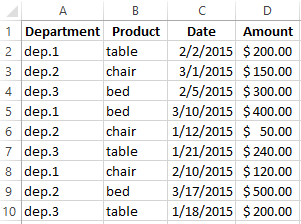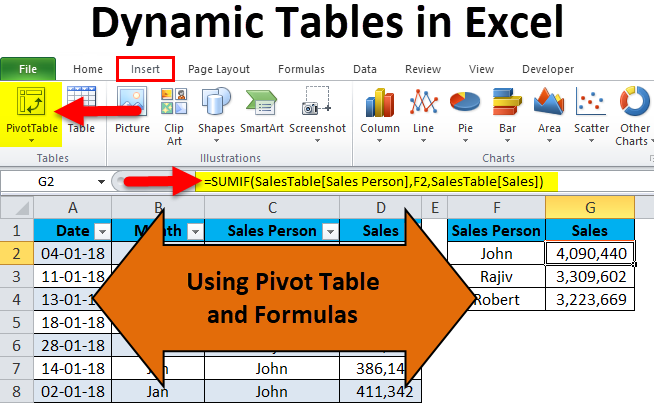

- #Consolidate multiple data sources in a pivottable applies to: excel for mac 2016 archive#
- #Consolidate multiple data sources in a pivottable applies to: excel for mac 2016 pro#
- #Consolidate multiple data sources in a pivottable applies to: excel for mac 2016 license#
- #Consolidate multiple data sources in a pivottable applies to: excel for mac 2016 download#
Besides these, the Comprehensive R Archive Network (CRAN) and Bioconductor host various statistical packages addressing different aspects of transcriptomics study and provides recipes for a multitude of analysis workflows. In recent years, many programs have been developed for the statistical analysis of transcriptomics data, such as edgeR and DESeq for differential expression testing, and monocle, Seurat, SC3 and SCDE for single cell RNA-Seq data analysis. Technologies such as RNA-sequencing measure gene expressions and present them as high-dimensional expression matrixes for downstream analyses. PIVOT will allow researchers with broad background to easily access sophisticated transcriptome analysis tools and interactively explore transcriptome datasets. PIVOT further supports automatic report generation, publication-quality plots, and program/data state saving, such that all analysis can be saved, shared and reproduced. A graph-based visual interface is used to represent the links between derived datasets, allowing easy tracking of data versions. PIVOT supports more than 40 popular open source packages for transcriptome analysis and provides an extensive set of tools for statistical data manipulations. Here we present PIVOT, an R-based platform that wraps open source transcriptome analysis packages with a uniform user interface and graphical data management that allows non-programmers to interactively explore transcriptomics data. Furthermore, exploratory data analyses often generate multiple derived datasets such as data subsets or data transformations, which can be difficult to track. You can learn more about this valuable Excel feature from Microsoft by clicking here.Many R packages have been developed for transcriptome analysis but their use often requires familiarity with R and integrating results of different packages requires scripts to wrangle the datatypes. Of course, once you create a data model, you can then summarize and analyze the data in the data model rather easily using PivotTables and, when necessary, CUBE functions in Excel. In addition, you can use Power Pivot to create links to external data sources and use the data provided by those data sources to populate your data models, although many will find Power Query to be a better option for this application. Regardless of the version of Excel you might use to access Power Pivot, the principal use case of this feature remains the same – it is used to manage data models in Excel.
#Consolidate multiple data sources in a pivottable applies to: excel for mac 2016 download#
#Consolidate multiple data sources in a pivottable applies to: excel for mac 2016 license#

Note, however, that version of the add-in will work only with Excel 2010. So now you can get Power Pivot in Excel 2010, Excel 2013 and all Office 2016 products, such as.Īdditionally, if you are still running Excel 2010, you can download the add-in for that version of Excel by clicking here or navigating to.

#Consolidate multiple data sources in a pivottable applies to: excel for mac 2016 pro#
Previously in the 2016 version of Office 365, you needed to have purchased the Office Pro Plus or Office 365 E3 to have access to Power Pivot within Excel, as I discuss in detail here.To restore the Power Pivot menu, do the following. This might occur if Excel closes unexpectedly while the Power Pivot window is open. In rare cases, the Power Pivot ribbon will disappear from the menu if Excel determines that the add-in is destabilizing to Excel. Troubleshooting: Power Pivot ribbon disappears. Excel 2013 and Excel 2016 when purchased as a standalone product.An Office 365 subscription that includes a Desktop license of Excel for Windows.which versions of Office/Excel provide access to power Pivot?Īs of January 8, 2019, you have access to Power Pivot if you are running any of the following versions of Microsoft Office/Excel. Fortunately, Microsoft simplified access to Power Pivot with the release of Excel 2019 and now, more people than ever have access to the feature. First introduced as an add-in for Excel 2010, availability of the tool has varied, depending upon which version of Excel you utilized. Over the years, knowing whether you have access to the Power Pivot feature in Excel has been challenging at times to say the least. Today, we are excited to announce the first step in a journey to support Power Query in Excel for Mac. These tools, based on Power Query technology, enable you to easily connect, combine, and shape data coming from a variety of sources. Excel 2016 for Windows introduced a powerful set of Get & Transform Data tools.


 0 kommentar(er)
0 kommentar(er)
